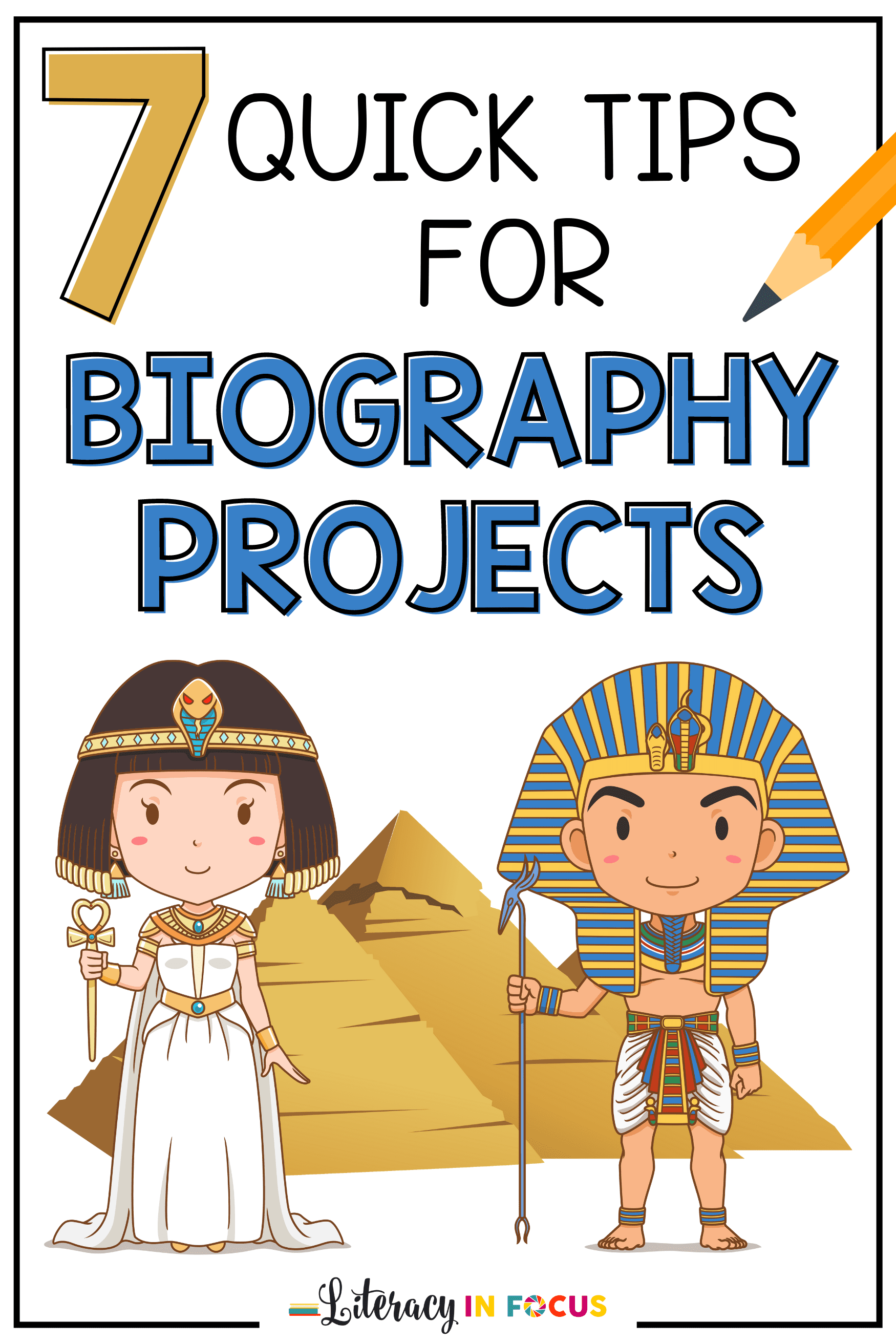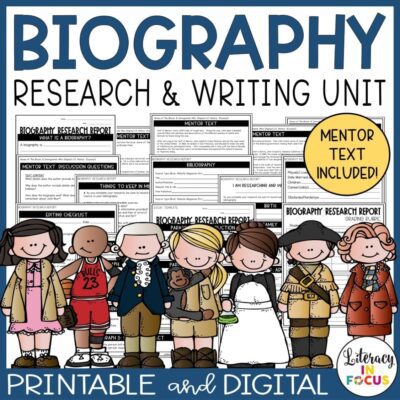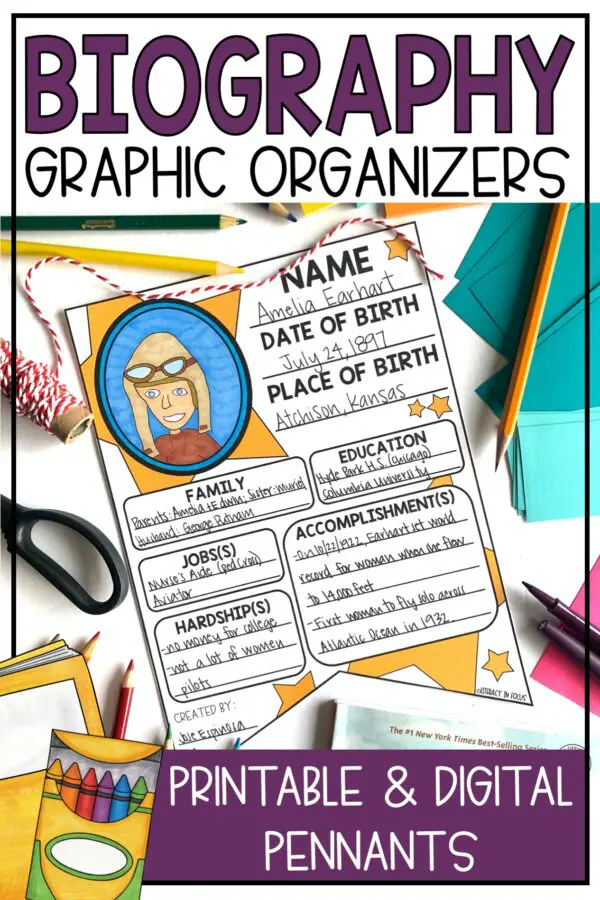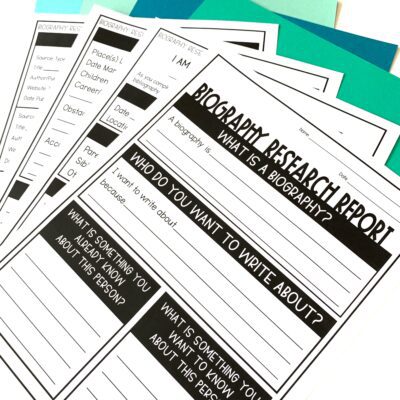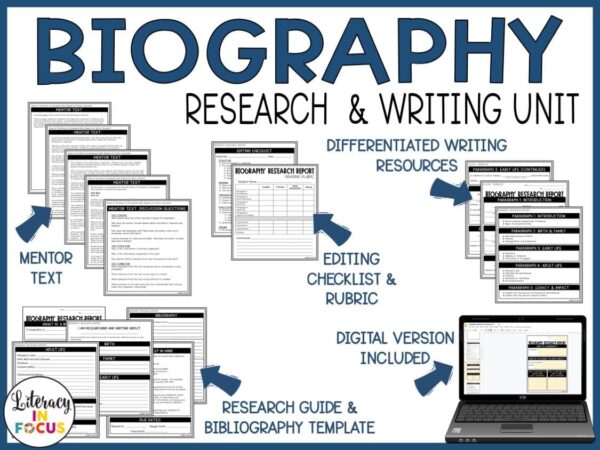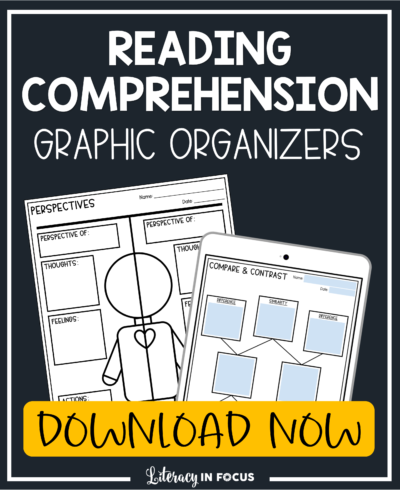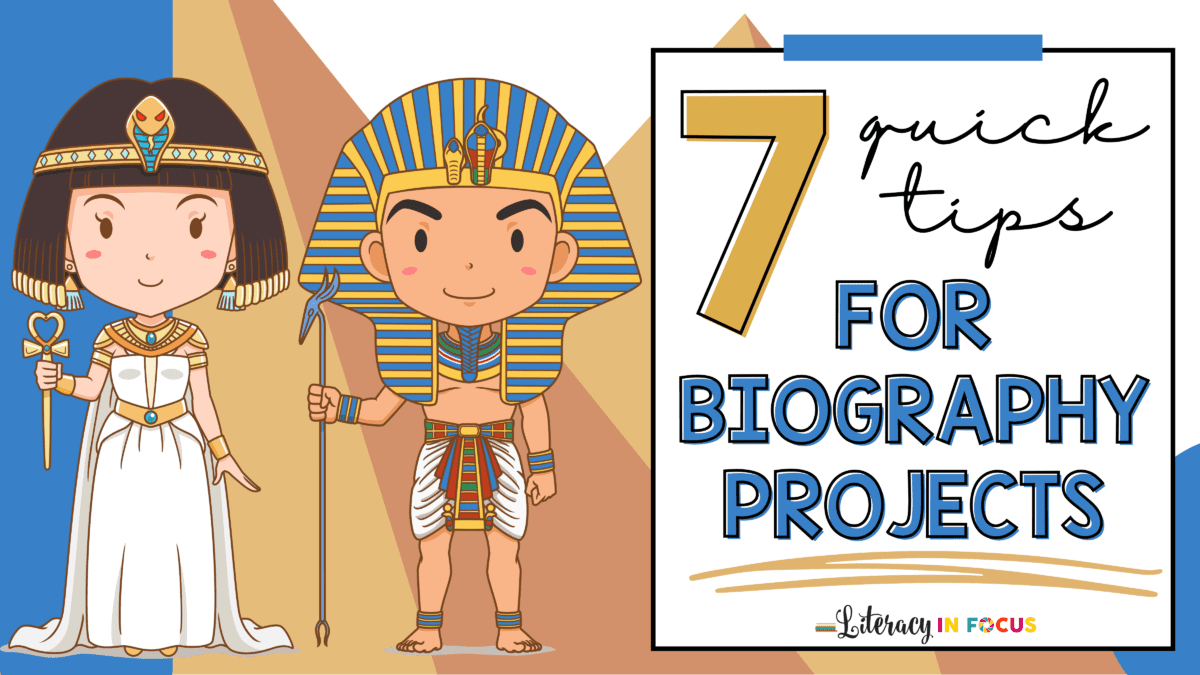
7 Quick Tips for Student Biography Projects
Completing a biography is an extremely valuable learning experience because it provides students with an opportunity to reinforce research skills, enhance writing skills, encourage critical thinking, foster creativity, and cultivate empathy. It might also encourage students to apply some of the lessons learned to their own lives.
1. Review the Definitions
Take a moment to review the definition of a biography. You can also use this time to focus on the differences and similarities between a biography and an autobiography. This leads nicely into a short discussion about word parts (auto, bio, and graph).
2. Start with a Mentor Text or Example
Starting the project with a mentor text or example will give students a strong frame of reference for crafting their own biographies. Here are some picture book biographies that will work well for this purpose. Use the mentor text or example for students to analyze the main characteristics of a biography, including:
- Organization
- Content
- Purpose
- Language/Style
Biography Report Template and Project
“Love the outline for the notes and how easily it was for my students to use. It really helped them organize their research and provided them with enough questions to gather a lot of information. Also love the paragraph lay out and the fill in the blank for my kiddos that are not as strong writers. Great!” -Kirsten H.
3. Explore Themes
Identifying a common theme that runs throughout the life of the individual being researched will help students organize their writing and develop a clear focus for their biography. Using the theme to focus on the most significant events, actions, and achievements of the important figure creates a more cohesive and compelling biography. Common biographical themes include:
- One person can change the world.
- Success requires hard work, dedication, and consistency.
- Facing challenges can make a person stronger.
- Ideas come to life with creativity and imagination.
4. Encourage Students to Choose Wisely
When choosing someone to research, encourage students to pick someone they admire. This will make the research and writing process more enjoyable. If students are required to pick from a list of significant figures, make sure to include a diverse selection. That way, you know your students will be able to find someone they will enjoy writing about.
5. Provide Essential Questions
It is helpful to frame your essential questions around the necessary components of a biography. If the students can answer most of the essential questions in their biography, they will most likely have a successful finished product. Here are some common essential questions used for biographical writing:
- When and where was this person born?
- What kind of childhood did this person have?
- Did this person receive an education? If so, what was it like?
- What was this person’s family life like? If possible, include details about parents, siblings, spouses, and children.
- What obstacles did this person face?
- What did this person accomplish?
- Why will this person be remembered?
6. Make Your Own Research Guide
Use your essential questions to design your own research guide. Providing students with some sort of research guide will help them remain focused and on task. The format and structure of the research guide is based on the needs of your students. Click here to see what I like to include.
7. Don’t Forget a Rubric
Students need to start with the end in mind. A rubric will give students a clear understanding of the project expectations. Using your research guide to create your rubric is an easy way to make sure your expectations align with your instruction.
Are you ready to incorporate a biography research report into your curriculum, but don’t have the time to create all of the necessary components? Click here to download everything you need from Literacy in Focus on TpT. Printable and digital formats are included!
“This has been a great resource to use to teach my students about how to conduct research, and the types of sources that they can use! It is a very organized and easy to implement resource. Thank you!” -Ashley
